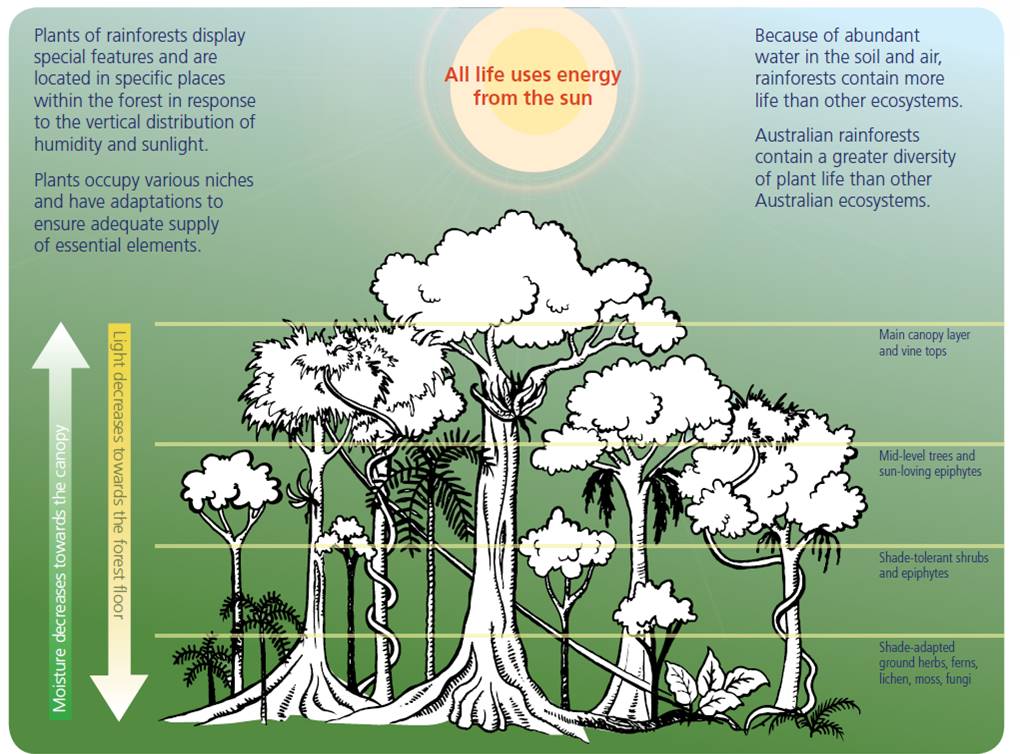A forest is an area that has a large number of trees. There are three types of forest: temperate, tropical, and boreal. It is estimated that forests cover approximately one-third of Earth’s surface.

Australia has 125 million hectares of forest: 16 per cent of Australia’s land area. This is around 3 per cent of the world’s forest area and the seventh largest reported forest area worldwide.
Forests play a vital role in supporting life on Earth and their significance encompasses ecological, environmental, social, and economic aspects including:
- Being primary producers of oxygen through the process of photosynthesis. They absorb carbon dioxide from the atmosphere and release oxygen.
- Acting as natural air purifiers, filtering harmful pollutants from the air
- Absorbing and storing carbon dioxide
- Creating diverse ecosystems that provide habitat and food for a vast array of plants, animals, insects, and microorganisms.
- Preventing soil erosion, which is crucial for maintaining fertile soil.
- Helping regulate rainfall patterns, prevent floods, and maintain groundwater levels.
- Regulating temperature, humidity, and precipitation patterns, creating a more stable environment.
- Reducing noise pollution by absorbing and dampen sound.
- Interacting with nature and spending time in natural environments has been shown to have positive effects on mental and physical health, reducing stress, anxiety, and promoting overall well-being.
Discover more about Australia’s Dry Forest
Australia’s forests are valued for their diverse ecosystems and unique biodiversity. They perform important environmental functions including storing carbon and protecting soil and water. Forests are also significant places with cultural and heritage values. They also provide access to green space used for recreational and relaxation.

